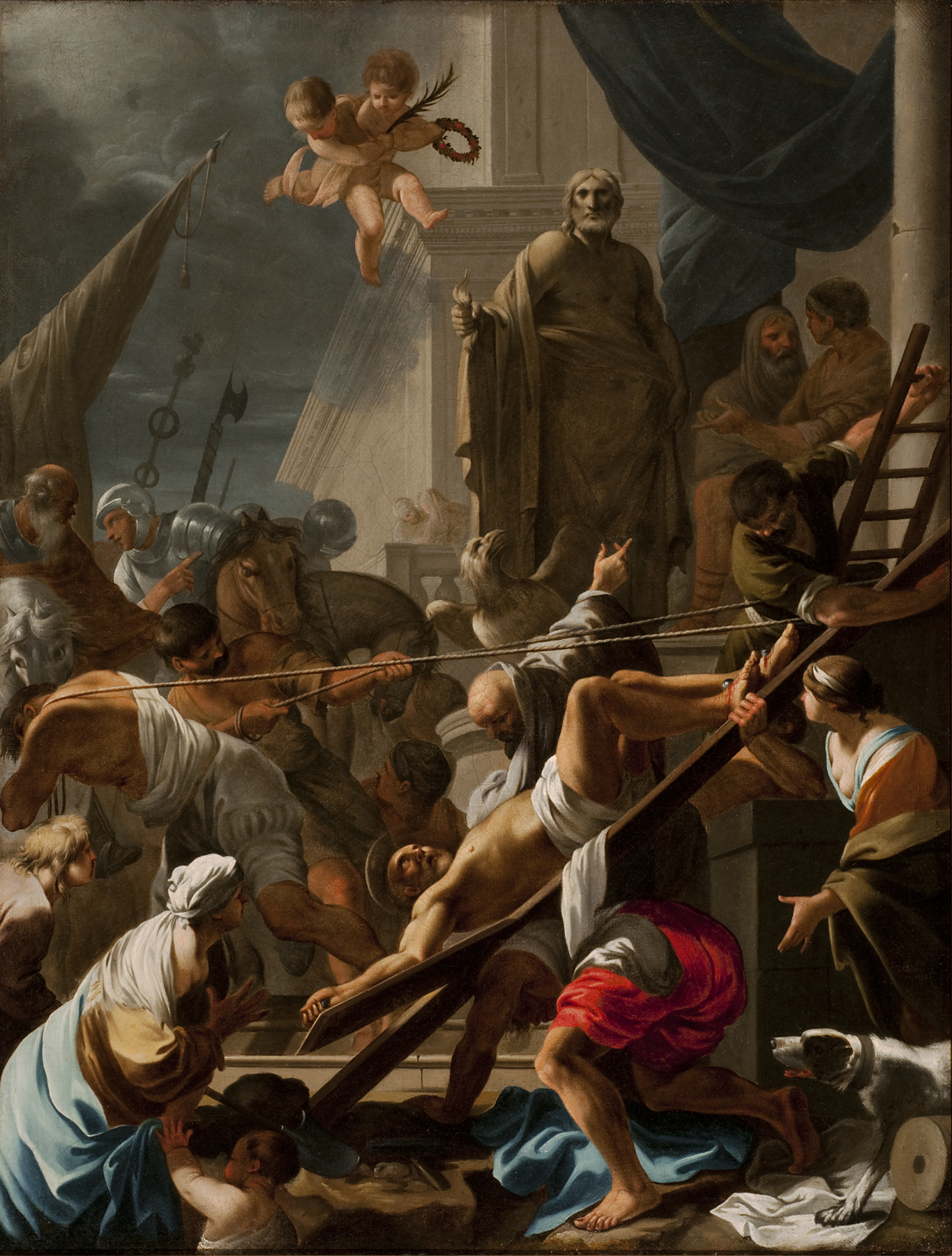Crucifixion of St. Peter, Sébastien Bourdon
Artwork Overview
Sébastien Bourdon, artist
1616–1671
Crucifixion of St. Peter,
circa 1644–1645
Where object was made: France
Material/technique: oil; canvas
Dimensions:
Canvas/Support (Height x Width x Depth): 81.4 x 62.4 cm
Canvas/Support (Height x Width x Depth): 32 1/16 x 24 9/16 in
Frame Dimensions (Height x Width x Depth): 39 1/2 x 31 3/4 x 2 1/2 in
Canvas/Support (Height x Width x Depth): 81.4 x 62.4 cm
Canvas/Support (Height x Width x Depth): 32 1/16 x 24 9/16 in
Frame Dimensions (Height x Width x Depth): 39 1/2 x 31 3/4 x 2 1/2 in
Credit line: Museum purchase: Helen Foresman Spencer Art Acquisition Fund
Accession number: 1984.0027
Not on display
If you wish to reproduce this image, please submit an image request


